
"Waltzing Matilda" is a song developed in the Australian style of poetry and folk music called a bush ballad. It has been described as the country's "unofficial national anthem".

Andrew Barton "Banjo" Paterson, was an Australian bush poet, journalist and author, widely considered one of the greatest writers of Australia's colonial period.

"The Man from Snowy River" is a poem by Australian bush poet Banjo Paterson. It was first published in The Bulletin, an Australian news magazine, on 26 April 1890, and was published by Angus & Robertson in October 1895, with other poems by Paterson, in The Man from Snowy River and Other Verses.
The Man from Snowy River: Arena Spectacular, based on Banjo Paterson's poem The Man from Snowy River, was a popular musical theatre production which toured Australian capital cities twice during 2002. Kevin Jacobsen and David Atkins were the executive producers for the show. David Atkins and Ignatius Jones were co-directors and co-writers. Extra dialogue was written for the show by Jonathan Biggins and Phillip Scott.

The Man from Snowy River is a 1982 Australian Western drama film based on the Banjo Paterson poem "The Man from Snowy River". The film had a cast including Kirk Douglas in a dual role as the brothers Harrison and Spur, Jack Thompson as Clancy, Tom Burlinson as Jim Craig, Sigrid Thornton as Harrison's daughter Jessica, Terence Donovan as Jim's father Henry Craig, and Chris Haywood as Curly. Both Burlinson and Thornton later reprised their roles in the 1988 sequel, The Man from Snowy River II. The 1988 sequel film was later released in the United States by Walt Disney Pictures under the title Return to Snowy River and in the United Kingdom under the title The Untamed.

Bernice Vere was an English-born stage, playwright, director, and film actress. She emigrated to Australia when she turned 12. She started performing on stage in Australia until the movie-producing team of E.J. Carroll and Snowy Baker discovered her. They cast her in the silent feature The Shadow of Lightning Ridge, where she acted alongside American actress Agnes Vernon.
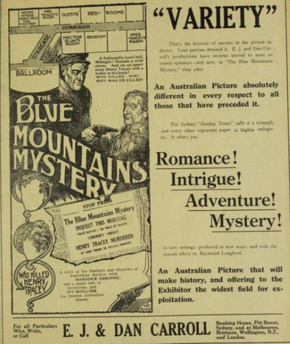
The Blue Mountains Mystery is a lost 1921 Australian silent film directed by Raymond Longford and co-directed by Lottie Lyell.
Frank Beaumont "Beau" Smith, was an Australian film director, producer and exhibitor, best known for making low-budget comedies.
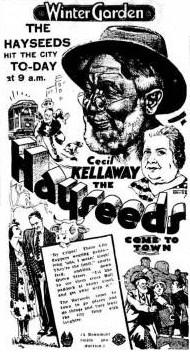
The Hayseeds is a 1933 Australian musical comedy from Beaumont Smith. It centres on the rural family, the Hayseeds, about whom Smith had previously made six silent films, starting with Our Friends, the Hayseeds (1917). He retired from directing in 1925 but decided to revive the series in the wake of the box office success of On Our Selection (1932). It was the first starring role in a movie for stage actor Cecil Kellaway.
Townies and Hayseeds is a 1923 Australian film comedy from director Beaumont Smith. It is the fifth in his series about the rural family the Hayseeds.
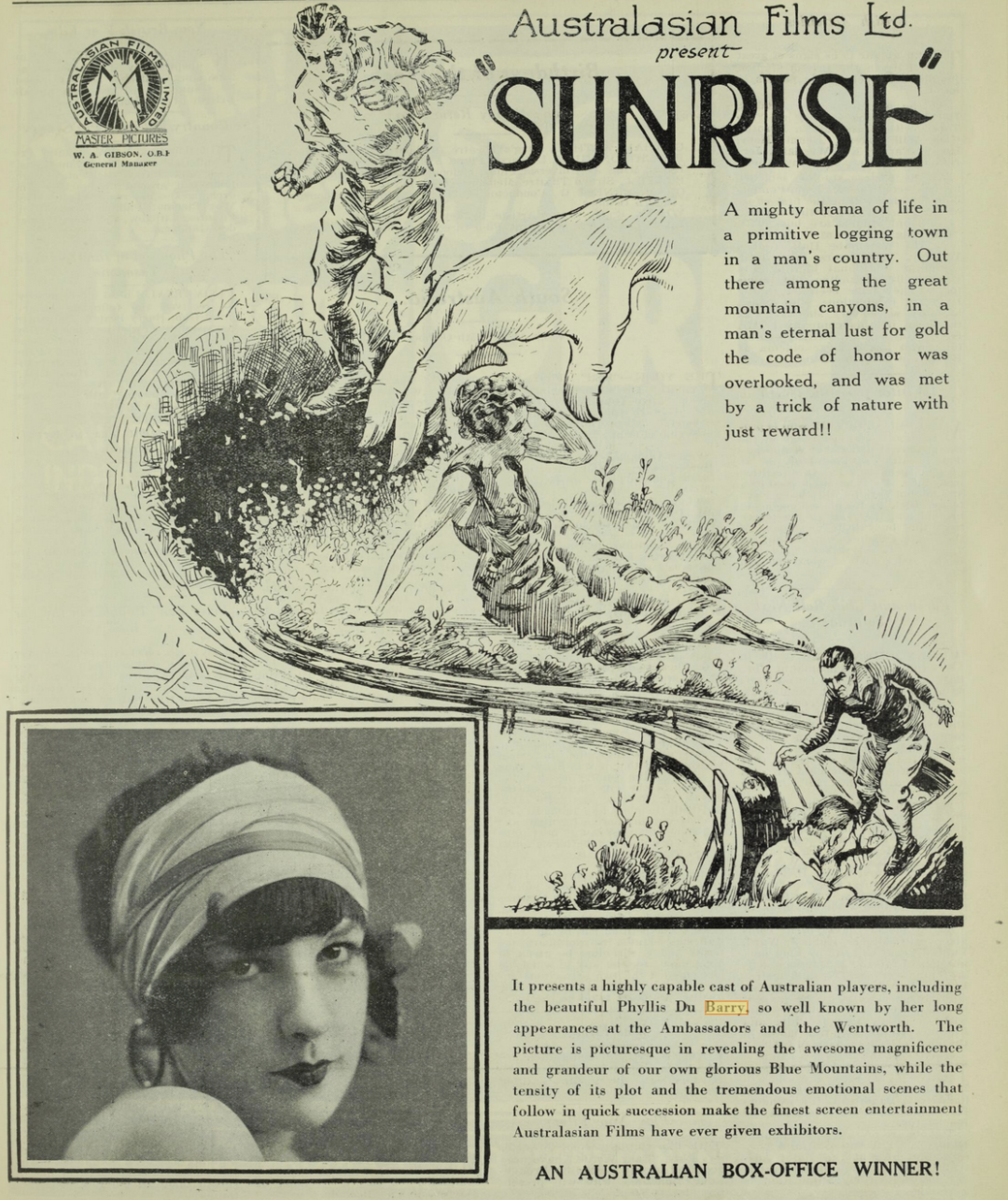
Sunrise is a 1927 Australian silent film co-directed by Raymond Longford, who took over during filming.

The Enemy Within is a 1918 Australian silent film starring renowned Australian sportsman Snowy Baker in his first screen role.
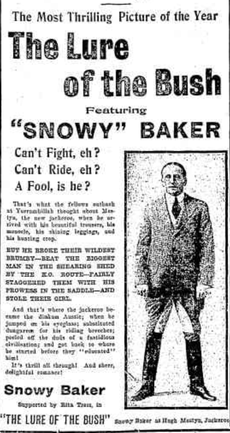
The Lure of the Bush is a 1918 Australian silent film starring renowned Australian sportsman Snowy Baker. It is considered a lost film.

The Man from Kangaroo is a 1920 Australian silent film starring renowned Australian sportsman Snowy Baker. It was the first of several films he made with the husband and wife team of director Wilfred Lucas and writer Bess Meredyth, both of whom had been imported from Hollywood by E. J. Carroll.
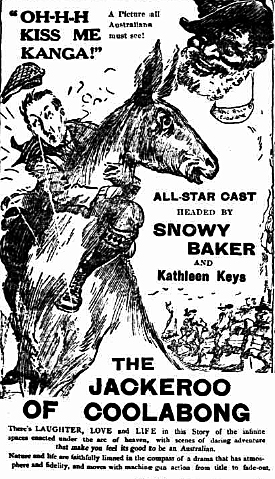
The Jackeroo of Coolabong is a 1920 Australian silent film starring renowned Australian sportsman Snowy Baker. It was the last of three films he made with the husband and wife team of director Wilfred Lucas and writer Bess Meredyth, both of whom had been imported from Hollywood.
The Kingdom of Twilight is a 1929 British-Australian film directed by British author and explorer Alexander MacDonald.
Tall Timber is a 1926 Australian silent film about a rich man who flees the city and works in a timber mill. It is considered a lost film.

The Life Story of John Lee, or the Man They Could Not Hang is a 1912 Australian silent film based on a stage play about the true life story of John Babbacombe Lee.

The Haunted Barn is a short 1931 Australian comedy film produced by F.W. Thring directed by Gregan McMahon. It was one of the first productions by Thring's Efftee Studios. The film was produced to support of the feature Diggers (1931) and shown on the same bill.
Cyril Mackay was an Australian-English actor. He was well known for his theatre appearances, and for playing the lead in The Man from Snowy River. While in Australia he worked for every major theatre management in the country. He was one of the most acclaimed actors of his day.














